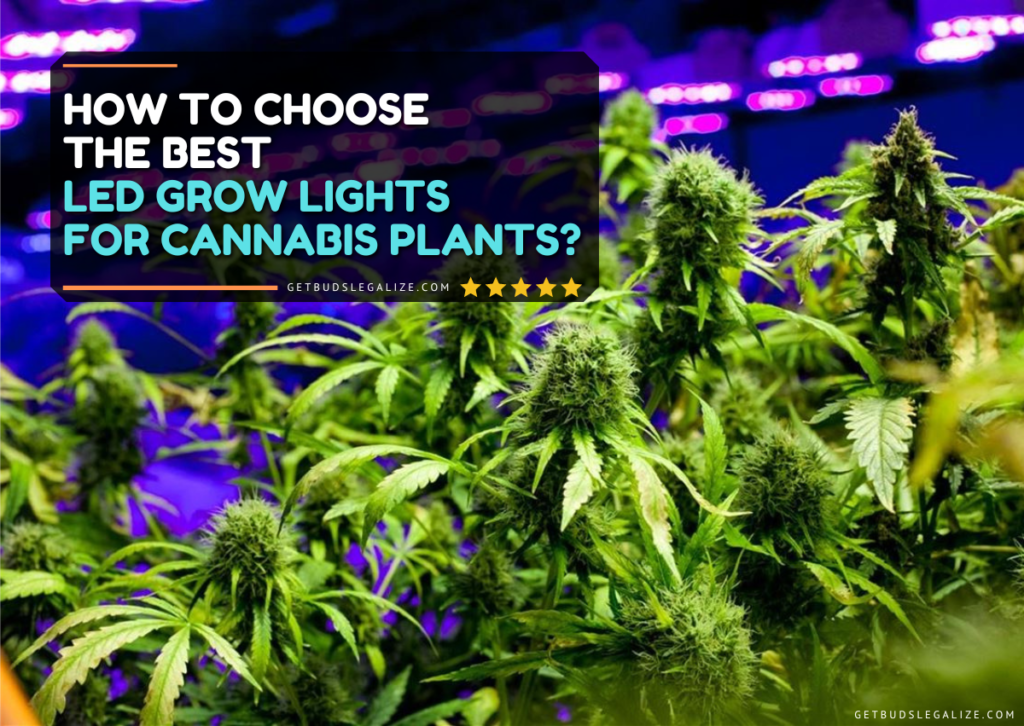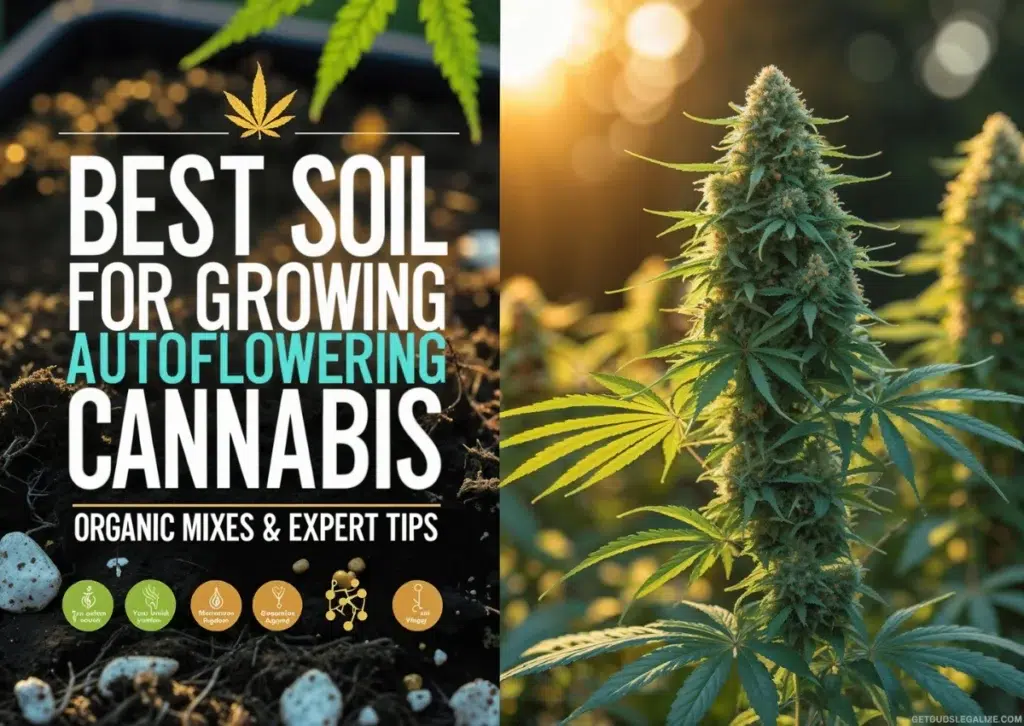How Far Should Grow Lights Be From Plants? LED Distance Guide for Every Stage
Are you wondering how far grow lights should be from plants like cannabis, seedlings, or potted herbs? Setting the correct LED grow light distance can make or break your harvest.
In this guide, you’ll learn exactly how far to hang grow lights at each growth stage—from seedlings to flowering weed plants—plus how to use PAR meters and light charts for optimal results.
Whether you’re growing cannabis, herbs, or vegetables indoors, dialing in the right grow light height ensures your plants get ideal light levels without burning or stretching.
Why LED Light Distance Matters
The distance between your grow lights and plant canopy plays a critical role in overall plant health and yield. If the lights are too close or too far, you risk stunting growth or weakening your crop.
Key Benefits of Correct Light Distance:
- Photosynthesis Efficiency: Proper distance ensures plants absorb the right amount of PAR (photosynthetically active radiation).
- Plant Structure & Internode Spacing: Prevents stretching, encourages tight node spacing.
- Nutrient & Water Uptake: Light intensity influences how well plants process water and nutrients.
- Bud Development & Aroma: Strong, even lighting supports denser buds and terpene production.
Too close? You risk leaf curling, light burn, and heat stress.
Too far? Expect lanky, weak plants with reduced yield and potency.
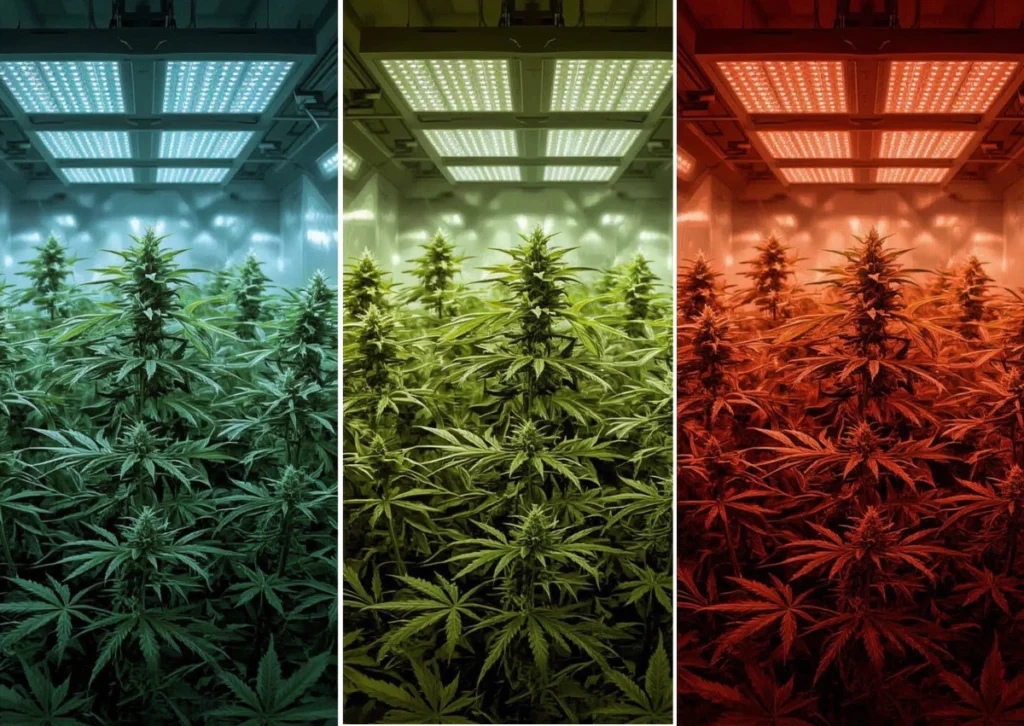
What Affects Grow Light Distance
Finding the right LED grow light distance for cannabis isn’t one-size-fits-all. The ideal height depends on the light spectrum, plant growth stage, and type of LED light you’re using. Here’s how each factor shapes your lighting strategy:
1. Light Spectrum & Intensity
Different spectrums affect growth in different ways:
- 3000K (Warm White): Rich in red and far-red wavelengths. Best for the flowering phase when buds are forming.
- 5000K (Cool White): High in blue light. Promotes short, leafy growth, ideal for seedlings and vegging.
- Full-Spectrum LEDs: Blend of blue, red, and far-red light. Mimic natural sunlight and support all growth stages in one fixture.
- Red (600–700 nm) & Far-Red (700–750 nm): Encourage flowering, resin production, and plant stretching when needed.
2. Plant Growth Stage Requirements
As your cannabis matures, it needs more intense light:
- Seedling Stage (100–300 µmol/m²/s): Keep lights higher or dimmed. Too much intensity will stress young plants.
- Vegetative Stage (400–600 µmol/m²/s): Boost light levels to drive stem and leaf development.
- Flowering Stage (800–1000 µmol/m²/s): Maximize intensity to encourage dense buds and rich cannabinoid production.
3. LED Light Type
Not all LED grow lights perform the same. The fixture’s design and layout significantly impact light intensity, heat output, and canopy coverage. Here’s how the main types compare:
- LED Panels: Compact and budget-friendly, these are ideal for beginners or small grow tents. However, they often provide uneven light distribution, which can cause inconsistent growth in larger setups.
- Bar-Style LEDs: Designed for even light spread across the canopy, these fixtures minimize hotspots and shadows. They’re perfect for maximizing yields in tents and professional grow rooms.
- COB LEDs (Chip-on-Board): Known for their high-intensity output from a concentrated source, COB LEDs penetrate deep into dense canopies. They generate more heat than other types, making them best suited for small, well-ventilated grow spaces requiring focused lighting.
Related Article:

How Far Should Grow Lights Be Above Seedlings?
Getting the light distance right during the seedling stage is critical. Young cannabis or herb seedlings are sensitive to intense light and heat.
Recommended LED Distances for Seedlings by Wattage:
| LED Wattage | Recommended Distance | Target PPFD |
| 150W | 25 cm (10″) | 100–300 µmol/m²/s |
| 300W | 25 cm (10″) | 150–300 µmol/m²/s |
| 480W | 30 cm (12″) | 200–300 µmol/m²/s |
Pro Tips:
- Use dimmable LED grow lights or switch to “Veg” mode to lower light intensity and avoid stressing young seedlings.
- Watch for plant signals: Stretching upward = light too far; curled or yellow-tipped leaves = light too close.
- Maintain ideal environmental conditions: Keep the temperature between 20–25°C (68–77°F) and humidity around 60–70% to support healthy seedling development and prevent shock.
- Adjust the grow light height daily with a ruler or tape—seedlings grow rapidly, and proper distance ensures healthy development.
How Far Should Grow Lights Be From Weed Plants in the Vegetative Stage?
As your cannabis plants move into vegetative growth, they need more light intensity to fuel robust stem and leaf development.
Recommended LED Distances for Vegetative Growth:
| LED Wattage | Distance Above Canopy | Target PPFD |
| 150W | 45 cm (18″) | 300–450 µmol/m²/s |
| 300W | 45 cm (18″) | 400–600 µmol/m²/s |
| 480W | 60 cm (24″) | 500–700 µmol/m²/s |
Pro Tips:
- Measure light distance daily using a ruler or tape—plants in veg can grow rapidly and close the gap to your lights overnight.
- Read your plant’s signals: Stretching or pale stems mean the light is too far; curled or bleached leaves mean it’s too close.
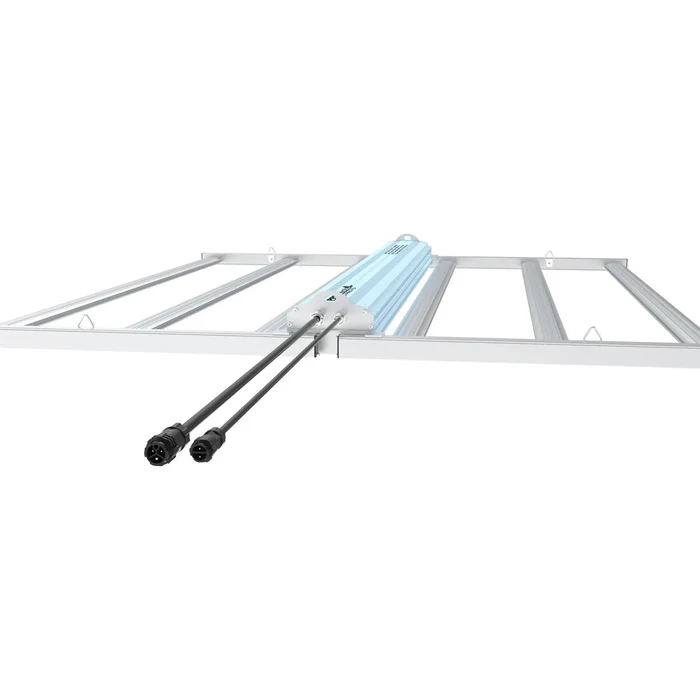
PPF Tech HG340 PRO FS1 – 340W LED Grow Light
- 🌈 Spectrum: Optimized Veg Spectrum (Osram/Samsung)
- 📏 Product Size: Large profile for wide coverage
- ⚡ Power Draw: 340W
- 🔋 PPE: 2.6 μmol/J
- 💡 PPF: 885 μmol/s
- 🔧 LED Chip: Samsung + Osram Arrays
- 🌿 Cultivation Coverage: Up to 120×120 cm (Veg)
- 🌱 Yield: Ideal for vegetative-phase growth
Flowering Stage: How Far Should Grow Lights Be From Bud Sites?
During flowering, cannabis plants need high-intensity light, especially red and far-red wavelengths, to produce dense, resin-rich buds.
Recommended LED Distances for Flowering Phase:
| LED Wattage | Distance Above Canopy | Target PPFD |
| 150W | 30 cm (12″) | 600–750 µmol/m²/s |
| 300W | 45 cm (18″) | 700–850 µmol/m²/s |
| 480W | 45 cm (18″) | 800–1000 µmol/m²/s |
Pro Tips:
- Use a PAR meter to maintain optimal light intensity (800–1000 µmol/m²/s) for maximum bud development.
- Adjust light height every 2–3 days—cannabis plants can stretch rapidly during early flowering.
- Control canopy climate: Keep temperatures between 24–28°C (75–82°F) and humidity at 40–50% to prevent mold and preserve potency.
- Prevent hotspots: Use bar-style LED grow lights for even light distribution across the canopy.
- Rotate your plants weekly to ensure all bud sites receive consistent, balanced light exposure.

How to Measure Grow Light Intensity Accurately
Proper grow light height is important, but without the right intensity, plants can still underperform. Use tools and techniques to dial in the best lighting for every phase.
Method 1: Use a PAR Meter (Most Accurate)
PAR meters measure PPFD (photosynthetic photon flux density), which tells you how much usable light is reaching the canopy.
Target PPFD Ranges by Growth Stage:
| Growth Stage | Recommended PPFD |
| 🌱 Seedlings | 100–300 µmol/m²/s |
| 🌿 Vegetative | 400–600 µmol/m²/s |
| 🌸 Flowering | 800–1000 µmol/m²/s |
Method 2: Use the Hand Test (Quick Heat Check)
No PAR meter? Try this basic heat test:
- Hold your hand palm down at canopy height for 30 seconds.
- Assess the heat level:
- 🔥 Too hot = Light is too close.
- ❄️ Cool or faint = Light is too far.
- 👍 Comfortably warm = Likely in the safe zone.
⚠️ Note: The hand test only measures heat, not light intensity or spectrum. It’s helpful in a pinch, but investing in a PAR meter provides far greater accuracy and control.
Related Article:

Common Grow Light Mistakes to Avoid
Even with great gear, small errors in light placement can derail a healthy grow. Avoid these frequent mistakes:
1. Not Adjusting Light Height as Plants Grow
Cannabis plants grow fast—sometimes centimeters per day. If you don’t raise your lights accordingly:
- 🔥 Tops may burn or bleach
- 🌿 Stems stretch weakly toward the light
- 🌸 Bud sites suffer uneven development
✅ Fix: Measure and adjust your grow light height every 1–2 days with a ruler or tape. Stay within the recommended distance range for each growth stage to maintain optimal light intensity and prevent stress.
2. Placing High-Intensity LEDs Too Close to Seedlings
Young seedlings are delicate and can’t handle strong light or heat. Positioning powerful LEDs too close can lead to:
- 🌱 Leaf curling or clawing
- ⚪ Bleached tips
- ⛔ Stunted early growth
✅ Fix: Start with low-wattage or dimmed LEDs positioned 25–30 cm (10–12″) above the seedlings. As they grow stronger, gradually lower the lights or increase intensity to match their tolerance.
3. Ignoring Plant Stress Signals
Plants speak volumes through their leaves—you just need to observe:
- 🌞 Yellow or bleached leaves = Light too intense
- 🌱 Tall, stretchy stems = Light too far
- 🔄 Curling or tacoing leaves = Heat stress
✅ Fix: Monitor your canopy daily. Adjust light intensity or height based on what your plants are telling you.
Related Article:
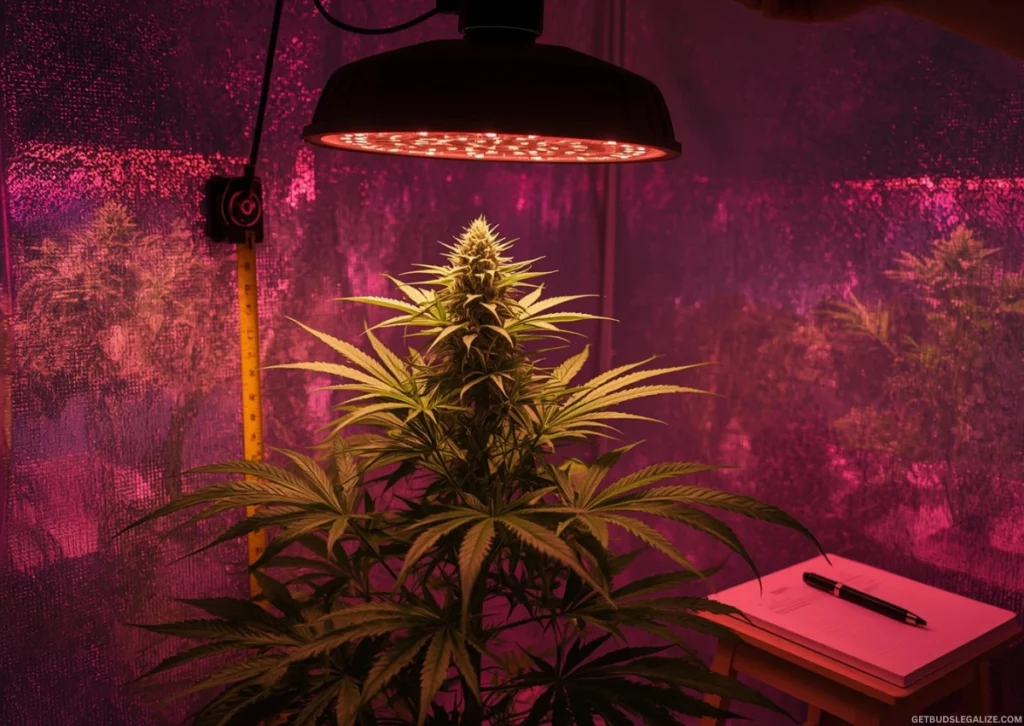
Final Tips to Maximize Grow Light Efficiency
Optimizing your grow light setup is an ongoing process. These tips will help you maintain peak performance throughout the grow cycle:
1. Adjust Light Height Regularly
Plants grow fast, especially in veg and early bloom. Failure to adjust means:
- Burned tips
- Reduced canopy coverage
- Light energy is wasted above or below the canopy
📏 Use a tape measure every few days to stay in range.
2. Use Adjustable Hangers or Pulley Systems
Don’t struggle with fixed lights. Hangers or ratchet pulleys make it easy to raise or lower lights as your canopy changes.
⚙️ Pro Tip: Mark your pulley cords to quickly identify ideal ranges.
3. Monitor Plants Closely
Daily visual checks help catch problems before they affect yield:
- Leaves too pale = light too intense
- Stretchy stems = insufficient light
- Uneven growth = poor distribution
⚙️ Pro Tip: Keep a grow journal with notes and photos. Tracking changes over time helps you spot trends early, fine-tune your lighting setup, and prevent costly mistakes.
Final Thoughts on LED Grow Light Distance
Mastering LED grow light distance isn’t just a setup task—it’s an ongoing discipline. From seedling to harvest, keeping lights at the correct distance protects your plants from stress, enhances photosynthesis, and maximizes bud quality.
Whether you’re using full-spectrum LEDs or budget grow lights, the secret lies in consistency: measure often, observe daily, and adjust smartly. With just a ruler, a PAR meter, and your grower instincts, you’ll raise happy, healthy, high-yielding plants every time.
Frequently Asked Questions (FAQs) about LED Light Distance for Weed
Keep LED grow lights 25–30 cm (10–12″) above seedlings to protect delicate sprouts from excessive light and heat. Seedlings are especially sensitive to intense blue-spectrum output, which can cause leaf curl, light burn, or stunted growth.
Tips for Success:
- Use dimmable LEDs or switch to “Veg” mode to reduce intensity.
- Observe seedlings daily—stretching may signal the light is too far, while curling or yellowing indicates it’s too close.
- Maintain 60–70% humidity and 20–25°C (68–77°F) temperatures for optimal early-stage growth.
For pot plants in the vegetative phase, full-spectrum LED grow lights should stay 30–45 cm (12–18 inches) above the canopy. Too much distance reduces light intensity; too little, and you risk burning the plants. It’s crucial for optimal plant growth indoors.
Flowering weed plants need intense light. Place full-spectrum or bloom-boost LED lights 30–45 cm (12–18 inches) above the canopy. For HID lights (600–1000W HPS), increase the distance to 60–90 cm (24–36 inches) to prevent bud bleaching and terpene degradation.
Yes—when grow lights are too close, especially HID systems like HPS and MH, they can cause heat stress, bleaching, and reduced yields. Monitor plant stress signals like tacoing leaves or pale growth.
Absolutely. When grow lights are too far away, your plants may stretch excessively, become weak, and show slow growth due to insufficient PAR. Internode spacing becomes wide, which reduces final yield and bud density.
The most accurate way to measure grow light distance is by using a PAR meter to check the PPFD (Photosynthetic Photon Flux Density) at the canopy level. This ensures your plants receive optimal light for each growth stage.
No PAR meter? Try the hand test:
Hold your hand at canopy height for 30 seconds. If the light feels too hot on your skin, it’s likely too intense for your plants—raise the fixture slightly.
Not all LED lights are made for plant growth. Household LED bulbs lack the proper light spectrum for photosynthesis. True grow lights provide full-spectrum output, including the blue and red wavelengths necessary for seedlings, vegetative growth, and flowering plants.
Yes. High-quality LED grow lights can support full-cycle plant growth indoors. They outperform traditional grow lights in efficiency, spectrum precision, and heat control—especially when placed at the correct distance.
Indoors, grow light distance varies by stage and light type:
- Seedlings: 25–30 cm (10–12″)
- Vegetative: 30–45 cm (12–18″)
- Flowering: 30–45 cm (12–18″) for LEDs or 60–90 cm (24–36″) for HPS
Always use a light chart or grow light distance calculator for your specific LED lighting model.
While no universal tool fits all lights, many LED grow light manufacturers provide a PAR map or chart. These charts guide you in placing lights at the right distance to hit target PPFD levels. For a complete guide, consult your light’s manual and measure with a PAR meter.
PPFD (Photosynthetic Photon Flux Density) measures how much usable light (PAR) hits your plant canopy, in µmol/m²/s. It’s key for healthy growth and yield.
Ideal PPFD Levels:
- Seedlings: 100–300 µmol/m²/s
- Veg: 400–600 µmol/m²/s
- Flower: 800–1000 µmol/m²/s
Staying in the right range boosts photosynthesis and prevents light stress. Use a PAR meter for best results.
PAR (Photosynthetically Active Radiation) is the range of light plants use for photosynthesis (400–700 nm). PPFD is how much PAR light actually reaches your plants. Think of PAR as the spectrum and PPFD as the intensity hitting the leaves.
Adjust light distance every 1–2 days during fast-growing phases (like veg and early flower). Cannabis plants can stretch quickly and grow too close to lights overnight. Use adjustable pulleys or ratchets for easy changes.
Use the hand test:
Hold your hand palm-down at canopy height for 30 seconds.
- 🔥 Too hot = light is too close
- ❄️ Cool = light is too far
- 👍 Comfortably warm = likely in range
Still, it’s best to use a PAR meter for accuracy.
ILGM Fertilizer:
Feed Your Plants Right

The Ultimate Cannabis Fertilizer – designed to fuel every stage from seedling to harvest.
✅ Feeds 5+ plants
✅ Big savings with bundle
✅ Works in soil, coco, or hydro
✅ Supports bigger, healthier yields
ILGM Plant Protector:
Ultimate Cannabis Protection

Shield your plants from pests and disease—naturally and effectively.
Protect From Seedling to Harvest
✅ Protects up to 20 plants
✅ Works in soil, coco, or hydro
✅ Fights pests & diseases fast
✅ Keep your grow healthy & stress-free






